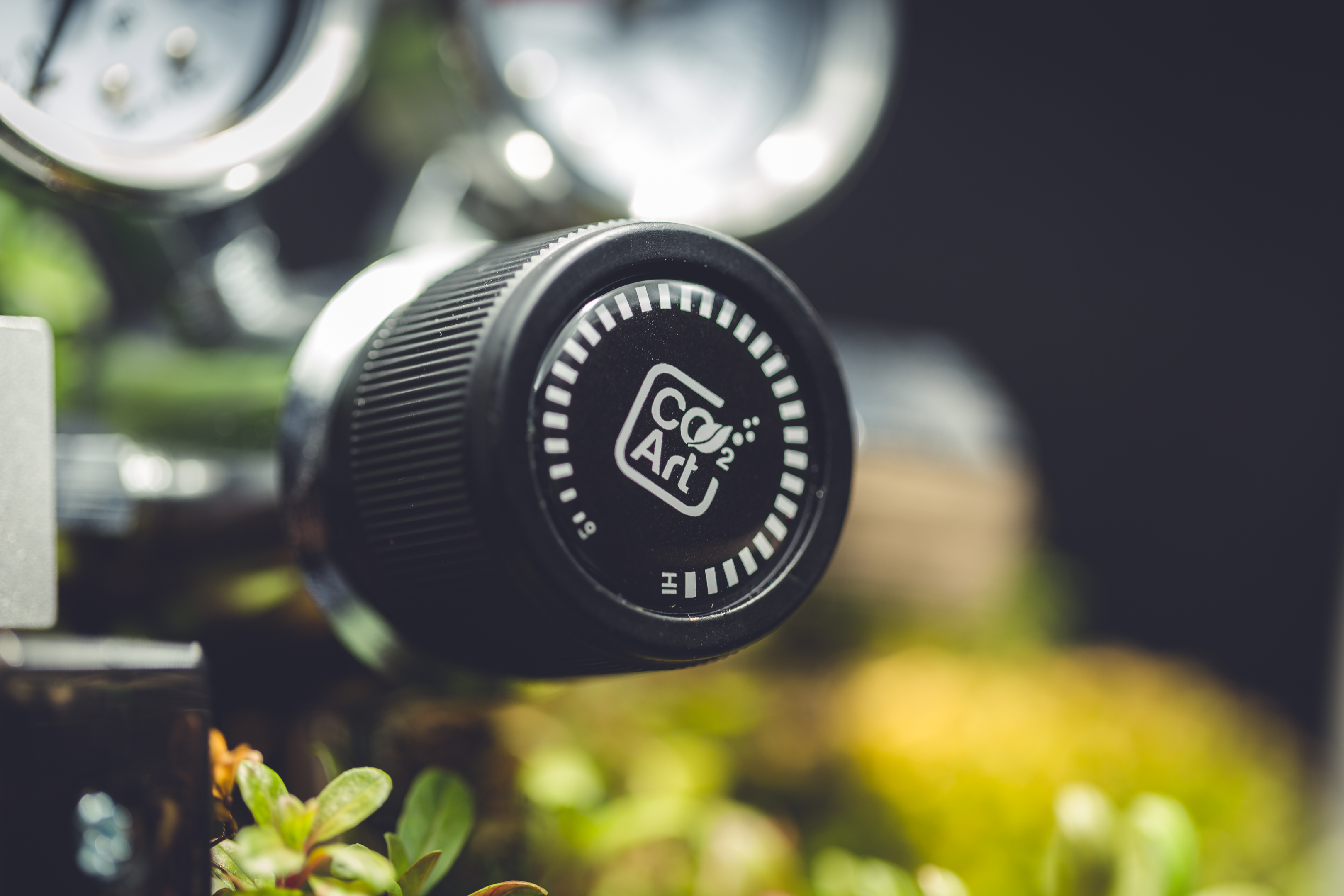CO2 fish tank
Every student knows the basics of the photosynthesis- water, carbon dioxide, strong lighting and then magic (rather biology) happens, we get organic compounds and a by-product in the form of oxygen. But if it happens naturally in lakes and rivers, is there really a need to implement a CO2 injection to our planted aquariums?

Why shall we stimulate the plant growth by using CO2 injection in our planted aquarium?
The fact is that in an average aquarium the concentration of CO2 ranges from 2 to 3ppm(part per million). This level is about 10 times smaller because in the nature the same concentration of carbon dioxide varies from 10 to 40 ppm. This comes from organic breakdown and underground CO2 deposits.
Planted tanks that have a CO2 diffuser installed, notice a large increase in plant growth, sometimes 5 or even 10 times bigger than in a standard, low-tech planted aquarium. It also helps us to get lush, colorful plants and dense carpets. Aquariums with CO2 injection have plants with better presentation and shapes. Ultra-thin stems, dwarf leaves, yellowish or light green coloration, algae on plants often mean that the level of CO2 is too low and those conditions are inappropriate. If too low level of CO2 remains for a long time, it will probably lead to the death of plants in your planted aquarium.
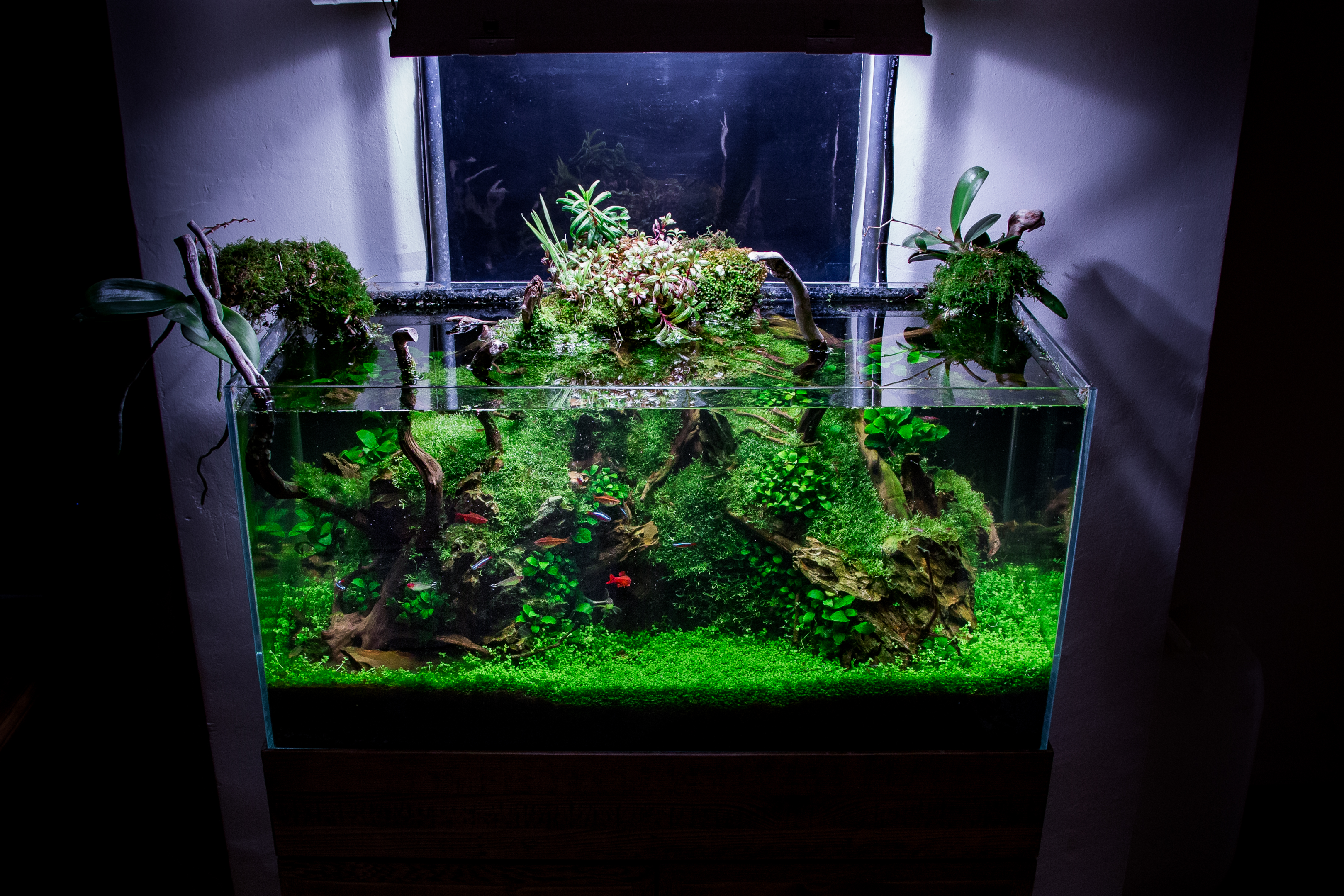
Is CO2 injection harmful to fish?
If the CO2 concentration is too high, it may block fish respiration or damage other invertebrates so it is safe to keep it below 30 ppm. Amounts above 30-35 ppm are toxic to most aquarium lives. Moreover, dissolved CO2 becomes carbonic acid in the water and the pH in our tanks decreases. In result you may expect series of consequences for plants and fishes in your aquarium.
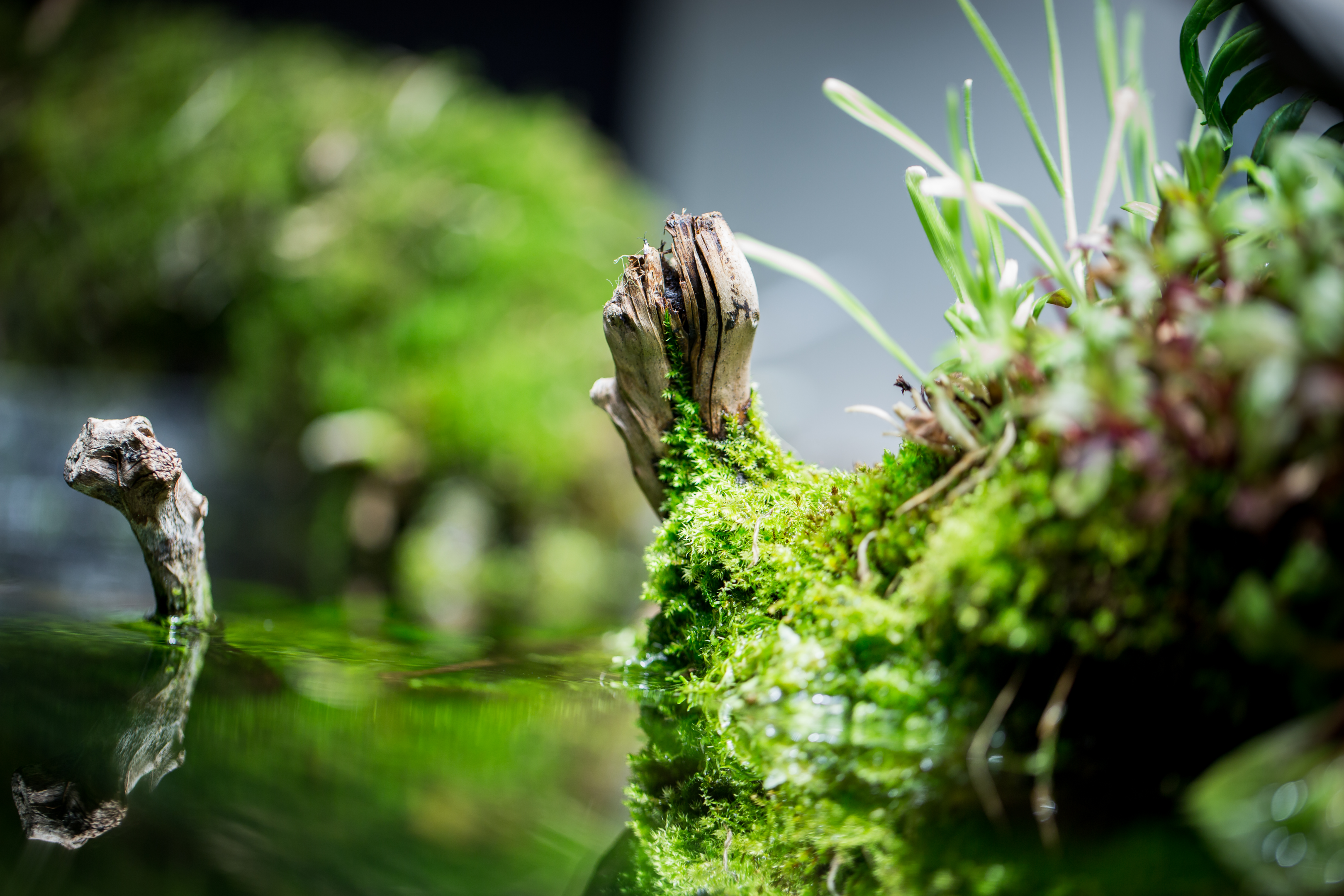
However if you carry on the CO2 injection process properly it's almost always profitable for fish. For instance, some species of fishes prefer tanks with dense vegetation:
-
Small tetras
-
Rasboras
-
Discus
-
Dwarf gouramis
Planted aquariums give the opportunity for those fish to hide themselves. Plants supply extra oxygen to the aquarium water and offer a better chance to survive for baby fish. Of course they also contribute to biological filtration that happens in the nitrogen cycle.
Those are exact reasons why you can keep both fish and plants in the same tank. By balancing the concentration of CO2 for demanding plants and sensitive fish you guarantee a healthy ecosystem in which these organisms are going to live happily ever after.
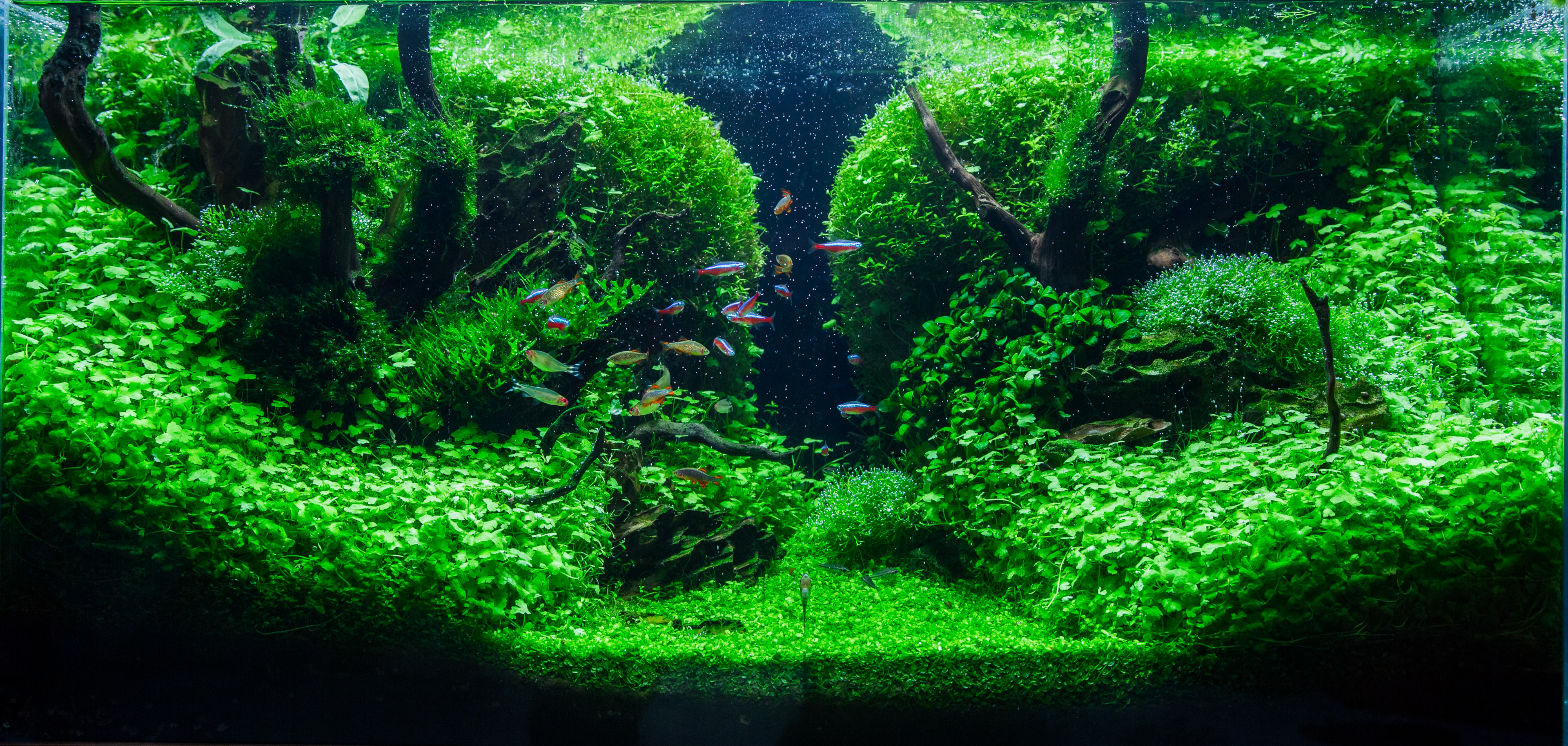
How to start CO2 establishment?
To begin with the pressurized CO2 system, you will need some special equipment and accessories to have everything well connected without any threats to a tank condition. The very true thing is to rely on trustworthy brands. If you collect the gear from unchecked sources, you may probably end up with nothing or with badly operating mechanism. As it was mentioned before, huge variations of CO2 concentration may destroy your aquarium life. In an aquarium market, there are so many options but the key word is quality. Nothing worse may happen than gassing the livestock. Below you can find a list of CO2 devices that are needed to start the journey with CO2 planted tank:
CO2 gas cylinder
We have to take CO2 from somewhere. To face the needs, pub bottles, sodastream, paintball or other cylinders from industrial gas companies will be good. These cylinders are equipped with a standard valve assembly that is installed to the neck of the cylinder. You can easily plug the CO2 regulator to the neck. If you possess special type bottles, such as paint gun, an adapter will be required.
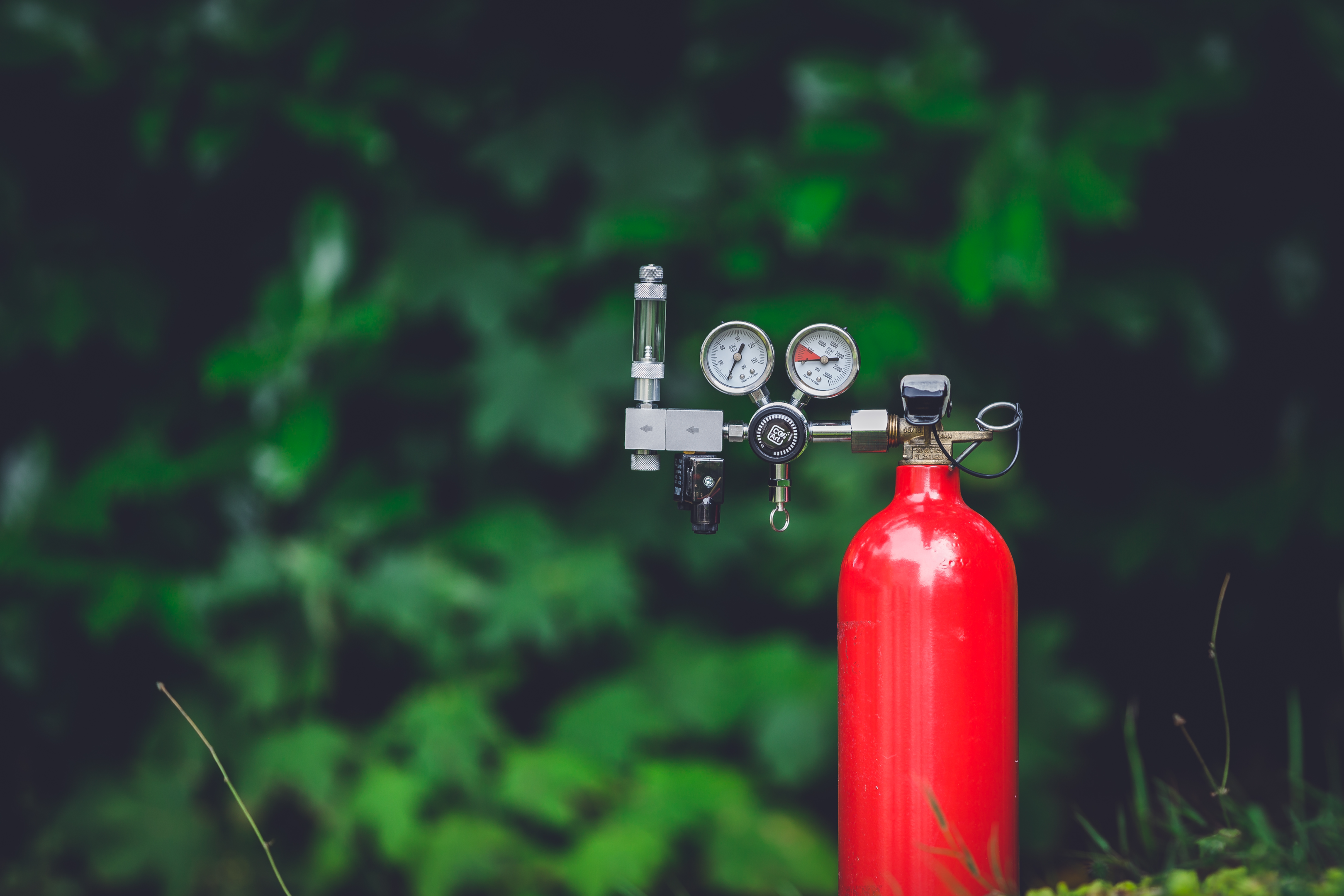
CO2 regulator
The CO2 regulator need to have two gauges. The first one indicates the remaining pressure content of the cylinder and the second indicates the pressure being output to the aquarium water. It's recommended to choose dual stage construction of the regulator which prevents end-tank-dump and sudden death to your fish.
Solenoid valve
The solenoid valve that is attached to the CO2 regulator allows automatic switching on and off the gas. This device is not obligatory but it solves a lot of issues when used with a timer and crosses out one chore on our to-do-list. Doing it manually can get a little bit boring.
One of the best features that the solenoid valve also have is that it stops the CO2 injection when the electricity is cut off while being absent and our livestock really appreciates it.
Needle valve
This kind of valve allows us to precisely control the gas pressure output to the aquarium water. This main valve may have two models: single-needle valve or multiple needle valves. If we choose the second option, it makes it possible to control more than one CO2 diffuser with only one regulator.
Tubing
This accessory is rather simple and elementary but it is definitely worth mentioning to buy only high pressure-rated tubes made of CO2 resistant materials i.g. polyurethane to prevent CO2 leaking.
Bubble counter
Well, another device that is optional but strongly recommended to estimate the amount of CO2 that is injected to the planted aquariums. When you fill the bubble counter's chamber with water and mount it to regulator or inline diffuser, it's going to show you the approximate value of CO2 in our fish tank- one bubble by one. Although the bubble counter is useful, that method should be always used together with drop checker. After drop checker indicates us the pH level, you may increase or decrease bubbles that appear over time with the needle valve.

Drop checker
Drop checker is a precise indicator of CO2 levels in the aquarium water. The color of the reagent in the drop checker chamber shows the pH of the tank water. Deep green means the exact amount of CO2 that is profitable to fish and aquarium plants but if it turns blue it means that there is too less of CO2. Yellowish coloration indicates too much of CO2 in our planted aquarium.
If think about purchasing a drop checker, take a look at our quick tutorial video on how to mount a drop checker in your tank and read the entire article about a drop checker.

CO2 diffuser
C02 diffuser is the last element on the CO2 assembly and should be selected for a particular size of the aquarium. They can be made of glass, acrylic, stainless steel. Nevertheless, their most important element is a ceramic membrane through which the CO2 is being dissolved in form of small bubbles.
A few types of the diffuser can be found: an inline diffuser or an in-tank diffuser. Inline diffuser is recommended for larger aquariums. In-tank diffuser is for somebody who has smaller aquariums.
Lighting
Lights are one of key elements, because they make it possible to observe what is in the tank and helps aquarium plants to do photosynthesis process properly.
Although lighting is not a part of CO2 injection system but their role is crucial for the healthy tank. High lighting can cause not wanted algae blooms and too low light intensity can create dangerous conditions for the livestock. Lights should be adjusted to our plants requirements as well as CO2 supplementation and fertilizing.
Visit our article about aquarium lights and their influence on aquatic plants and decide if you should add more light or less.
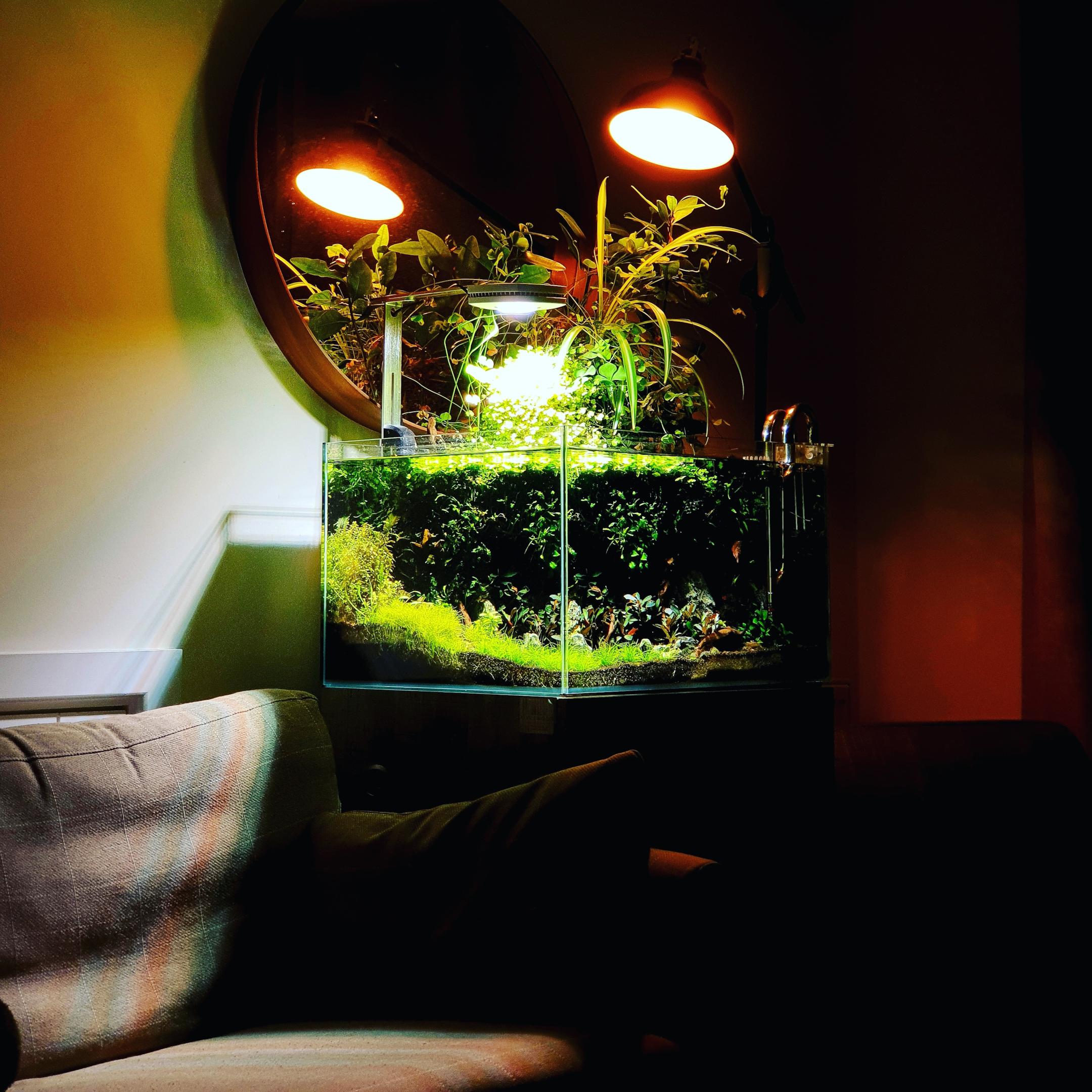
CO2 injection- yes or no?
At first sight it might seem a little bit difficult to own a CO2 diffuser and all the staff around it but in times of the Internet everything is simpler. If you follow the rules the diffuser will only affect your tank positively. Gas fertilization will result in magnificent effects in the blink of an eye.
